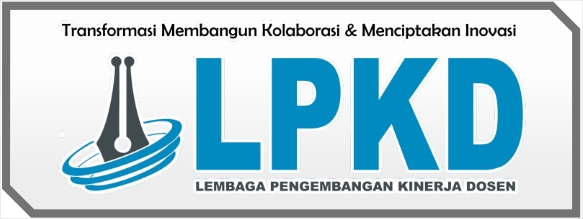PENERAPAN TEKNIK RELAKSASI NAFAS DALAM MEMBERIKAN ASUHAN KEPERAWATAN PADA PASIEN CHEIS PAIN DI RUANGAN IGD RSUD Prof. Dr. H. ALOEI SABOE KOTA GORONTALO
DOI:
https://doi.org/10.55606/termometer.v1i3.1882Keywords:
Chest Pain, Deep Breathing Relaxation Technique, Pain LevelAbstract
; Chest pain (chest pain) is a disease caused by various organ disorders, such as the blood vessels of the heart, lungs and digestive organs. Pain or discomfort in the chest (angina pectoris) is the main symptom and the most frequently reported complaint by patients. Angina pectoris is chest pain caused by decreased coronary blood flow to the heart muscle. Method; In making this research, researchers used descriptive methods and case studies. Researchers obtained client data through observation, interviews, physical examinations, and recording. The methods used are assessment, diagnosis therapy, planning, implementation and evaluation. Results; After the researchers carried out nursing actions on subjects I and II that after 1x6 hours of treatment it was found that the pain problem was partially resolved where the patient still felt pain but with a decreased intensity from before, namely patient I had a pain scale of 3 (mild) and increased 3-4 hour naps , night 7-8 hours. Likewise with patient II where the pain scale decreased to 2 (mild) and increased 2-3 hours during the day, 5-6 hours at night. Conclusion; The author concludes that treating chest pain patients using deep relaxation techniques can help reduce patient pain.
Downloads
References
Aisyah, S. (2020). Manajemen Nyeri Pada Pasien Dengan Pendekatan Non Farmakologi. Jurnal Keperawatan Muhammadiyah, 2(1).
Andi, H. F. (2023). Analisis CT Scan Cardia Klinis Chest Pain Di Rumah Sakit Bhayangkara Makassar. Jurnal Ilmiah Multi Disiplin Indonesia, 1(9), 1278–1285.
Anwar, T. B. (2018). Nyeri Dada.
Damayanti, I., & Arif. (2020). Penerapan Terapi Relaksasi Otot Progresif Pada Ny. F Dengan Congestif Heart Failure (CHF) Di Ruangjantung Rsud Dr. Achmad Mochtar Bukittinggi Tahun 2019. 164 halaman.
Hari, S. H. (2021). Patofisiologi Penyakit Jantung Koroner. JAI (Jurnal Anestesiologi Indonesia), 6(3), 209–224.
Hidayat, M. R. (2019). Pengaruh Mendengarkan Musik Instrumental terhadap Penurunan Skala Nyeri Pada Pasien Penyakit jantung Koroner Di RSUD Ulin.
Imelda, T. D. S. (2021). Manajemen Nyeri untuk Chest Pain. 12(3), 107–112.
Irwan, W. K. S. (2020). Terapi Akupresur Sebagai Evidence Based Nursing Untuk Mengurangi Nyeri Dada Pada Pasien Sindrom Koroner Akut. Journal of Health, Education and Literacy, 2(2), 69–73.
Kemenkes RI. (2018). Riset Kesehatan Dasar (RISKESDAS). Kementerian Kesehatan Republik Indonesia.
Kepmenkes RI Nomor HK.01.07/MENKES/481/2019 tentang Pedoman Nasional Pelayanan Kedokteran Tata Laksana Nyeri, (2019).
Muhammad Ridwan. (2020). Analisis Karakteristik Nyeri Dada Pada Pasien Sindroma Koroner Akut di Rumah Sakit Umum Daerah Dr. Zainoel Abidin Banda Aceh. Journal of Medical Science, 1(1), 20–26.
Mus’ab, S. R. (2020). Heart Score Sebagai Assesment Pada Pasien Dengan Chest Pain Di Instalasi Gawat Darurat. Avicenna : Journal of Health Research, 3(1), 49–55.
Muttaqin, A. (2014). Buku Ajar Asuhan Keperawatan Klien dengan Gangguan sistem Kardiovaskuler dan Hematologi. Salemba Medika.
Nareza, M. (2022). Ketorolak. https://www.alodokter.com/ketorolac. Akses tanggal 14 Maret 2023.
Parmasih, Sari, W., & Ari Astuti, I. (2012). Tehnik Relaksasi Nafas Dalam Terhadap Penurunan Nyeri Pada Anak Post Operasi Apendiktomi Di Ruang Alamanda Rsud Tarakan. JCA Health Science, 1(2), 2021.
Pomalango, Z. B., & Pakaya, N. (2022). Pengaruh Thermoterapy terhadap Penurunan Tingkat Nyeri Dada Pasien Infark Miocard Acute di Ruang ICU RSUD Toto Kabila. Jurnal Ilmiah Universitas Batanghari Jambi, 22(2), 1142.
Potter & Perry. (2013). Fundamental of Nursing. Salemba Medika.
Rahman, I. A., & Dewi, R. L. (2023). Intervensi Teknik Relaksasi Terhadap Penurunan Skala Nyeri. 15, 33–40.
Rampengan, S. (2012). Nyeri Dada Kardiak dan Nonkardiak. Journal Kedokteran Yarsi, 20(1), 45–53.
Rindiani, S. (2022). Penerapan Relaksasi Nafas Dalam Terhadap Nyeri Dada Pasien Chest Pain. 2, 506–513.
Smeltzer, S. C. (2014). Keperawatan Medikal Bedah (Handbook for Brunner & Suddarth’s Textbook of Medical-Surgical Nursing) (Devi Yulianti & Amelia Kimin (ed.); 12th ed.). EGC.
Suhartiningsih, S. (2019). Teknik Relaksasi Nafas Dalam untuk Menurunkan Intensitas Nyeri Post Operasi Sectio Caesarea di RSIA Melati Magetan. 2-TRIK: Tunas-Tunas Riset Kesehatan, 9(4), 364–368.
Tri, A. M., & Niken, S. (2019). Teknik Relaksasi Nafas Dalam Untuk Menurunkan Skala Nyeri Pada Pasien Post Operasi Sectio Caesarea. Jurnal Manajemen Asuhan Keperawatan, 3(2), 19–25.
Widianti, S. (2022). Teknik Relaksasi Nafas Dalam Terhadap Penurunan Intensitas Nyeri Pada Pasien Post Operasi Fraktur (Studi Literatur). Jurnal Kesehatan Dan Pembangunan, 12(23), 92–99.
Wijaya, I. P. A., Wati, D. K., Pudjiadi, A., Latief, A., Francisco, A. R. L., Ogasawara, H., Megawahyuni, A., Hasnah, H., & Azhar, M. U. (2018). Factors Influence Pain Intensity Patient Post Operation Lower Limb Fracture In BRSU Tabanan. Journal of Chemical Information and Modeling, 2(1), 8.
Woodard, F. (2019). Penatalaksanaan Chest Physiotherapy. Physiotherapy (United Kingdom), 80(6), 394.
Yusuf, F. (2021). Approach to managing Undiagnosed Chest Pain: Could Gastroesophageal Reflux Disease Be A Cause.
Downloads
Published
How to Cite
Issue
Section
License
Copyright (c) 2023 Pipin Yunus, Respi Yolanda Magaribu

This work is licensed under a Creative Commons Attribution-ShareAlike 4.0 International License.










